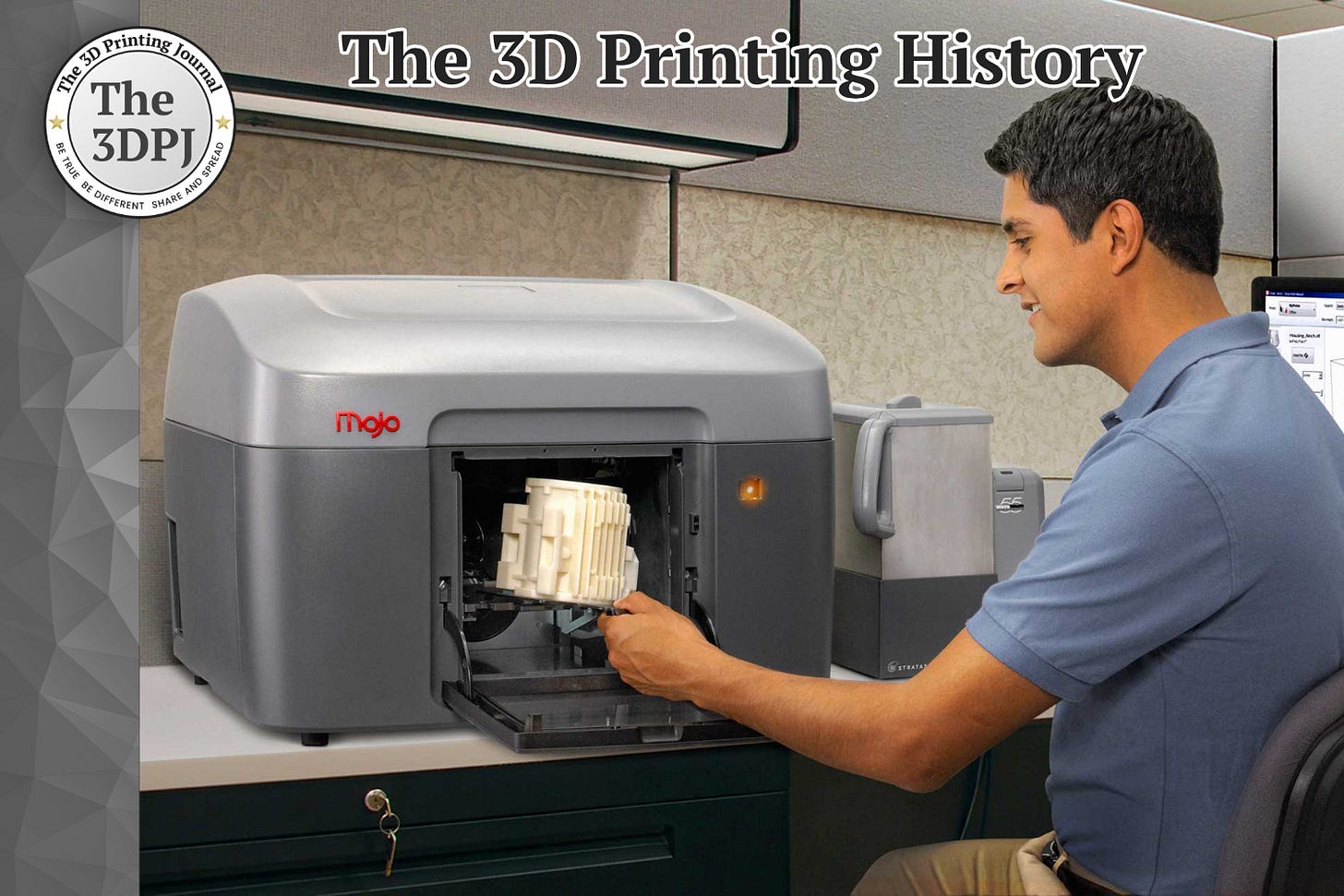05-08-2012: Stratasys "got its Mojo" with a new desktop 3D printer
It was the company's final (yet unsuccessful) attempt to enter the consumer market before acquiring MakerBot
On May 8, 2012, Stratasys introduced the Mojo 3D Printer as part of its $9,900 Mojo 3D Print Pack. At the time, it was the market’s lowest-priced professional-grade 3D printing system. The package included the printer, materials, and a WaveWash 55 support-removal system, offering a complete solution for model production.
The Mojo printer featured Stratasys’s patented FDM technology. It used the innovative QuickPack print engine, which combined an ABS material spool and print head into a single unit. Each material replacement included a fresh print head, ensuring reliability. Loading material was as simple as replacing an ink cartridge in a standard printer.
Mojo measured 25 x 21 x 18 inches (63,5 x 53,34 x 45,72 cm) and required no special training to operate. Users controlled settings through a host computer, and the Print Wizard software streamlined the workflow. Mojo delivered fine feature detail with a resolution comparable to the high-end Dimension Elite and Fortus Production lines.
Unfortunately, considering both the market conditions at the time and today, the Mojo had a critically small build volume of just 127 x 127 x 127 mm. At a price point of nearly $10,000, it was absurdly overpriced compared to already available alternatives like the MakerBot Replicator, Solidoodle, or Ultimaker.
Additionally, the requirement to use proprietary material cartridges was a financial burden for users. The dedicated ABSplus material came in nine colors (including ivory, white, black, and red) and was supplied in patented QuickPack Print Engine cartridges with a capacity of 1,311 cm³ (80 cubic inches). Each cartridge contained an integrated print head that was replaced every time the material was changed. Mojo also supported soluble supports, which were removed using the WaveWash 55 system.

The name “Mojo” officially symbolized the magic of 3D printing. In reality, it was a failed attempt to compete with much cheaper desktop systems from afromentioned MakerBot, Solidoodle, and Ultimaker, which had already entered the market a year earlier.
Unfortunately, the Mojo was discontinued fairly quickly, and Stratasys ended technical support, servicing, and the supply of spare parts for this model.
Source: www.stratasys.com




